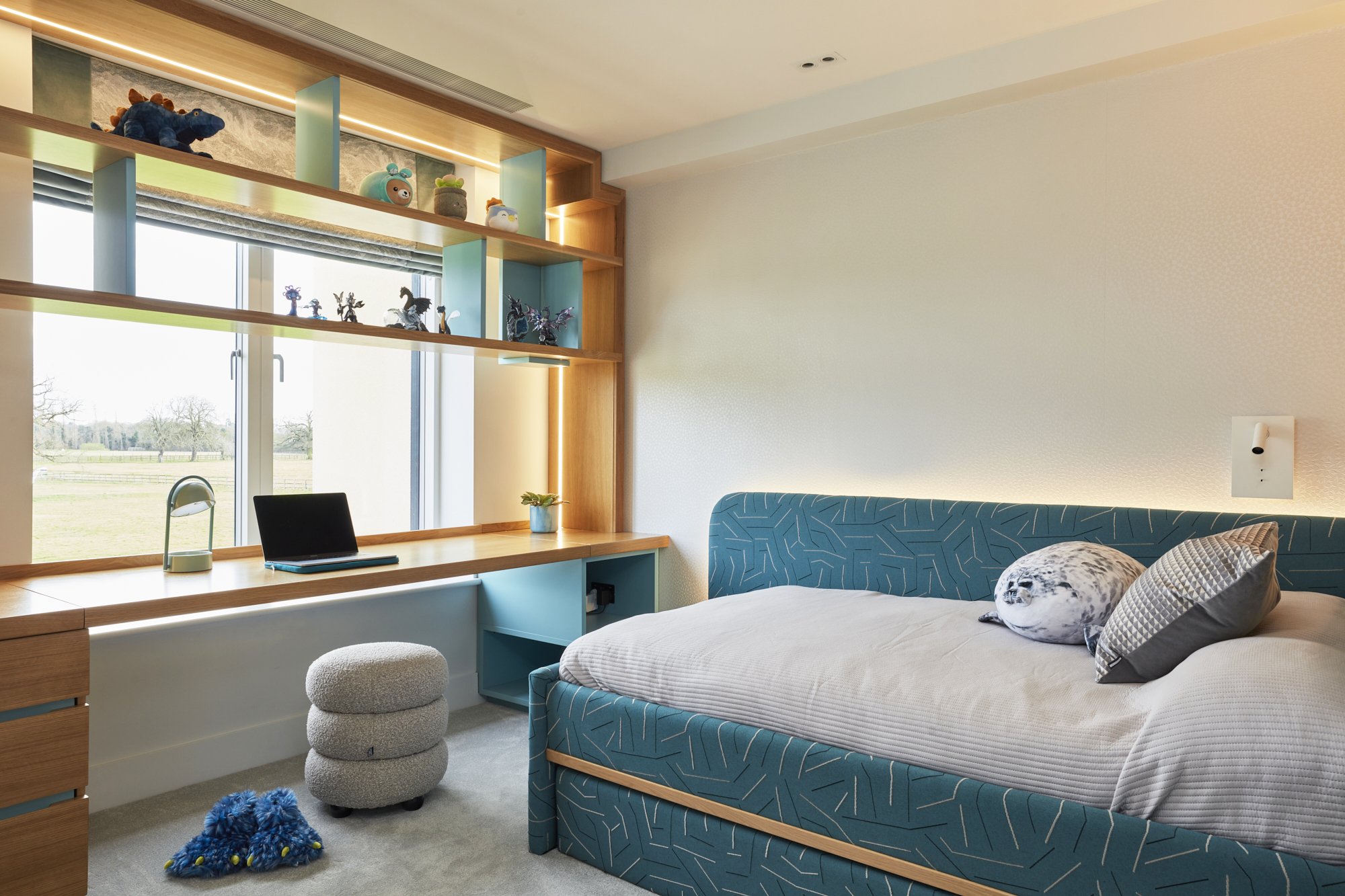Creating Magical Worlds: Interior Design for Children’s Spaces
Designing a space for children can be challenging but also an exciting endeavour, it’s where creativity and imagination can truly take centre stage. Whether it’s a playful bedroom, a cosy reading nook or a vibrant playroom, designing kids areas can allow for creating magical worlds where young imaginations can thrive.
Let’s explore some tips and ideas for designing aesthetic and functional spaces that cater to the needs and interests of children!
Interior Design by Renata Drumond Interior Design
Playful themes and bright colours: Designing kids spaces gives opportunities to use playful themes and vibrant colours. Such as, outer space, jungle adventures, underwater worlds, or fairytale kingdoms, there is a huge variety to choose from. Bright colours such as orange, yellow, pink, blue etc. fit perfectly into kids spaces, giving the kids energy and sparking joy within them.
Creative zones: Incorporating specific areas within the spaces for activities and interests, such as, a cosy reading nook with age appropriate books, an arts and craft table filled with art supplies, etc will encourage exploration, imaginative play and self expression.
Safety and functionality: Safety and functionality of a space is very crucial for when designing kids spaces. Such as, using furniture with round edges, secure heavy items, trying to avoid using small items that pose choking hazards. Ensuring functionality by incorporating storage solutions to keep items organised and easily accessible.
Personalising the space: By involving kids in the design process will help them feel like the space is personal to them and make them more comfortable. You can do this by letting them choose their colour, themes and furniture that they might like. Most importantly, Kids choosing their own art for the rooms will allow them to feel as though the space is uniquely theirs. Creating spaces that reflect their interests and personality will foster a sense of ownership and pride.
Versatile spaces: You should try to design kids spaces with versatility in mind. It is important to ensure the design evolves with their interests and needs as they grow. By choosing furniture and decorative items that can adapt to different stages of childhood, such as, cribs that transfer into toddler beds or shelving units that can be reconfigured as storage needs change.
Interior Design by Renata Drumond Interior Design
By embracing playful themes, fostering creativity, prioritising functionality and safety, personalising the spaces, and creating versatile environments that grow with them, you can design inspiring and functional kids spaces that spark wonder, creativity, and joy. Let their imagination soar on the journey of creating magical worlds for the little ones.


